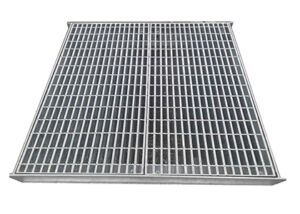Heavy duty grating for mining sites is an essential component in ensuring safety and efficiency in harsh environments. Mining operations demand robust materials that can withstand heavy loads and extreme conditions. This article delves into the importance of heavy duty grating, its applications, and the benefits it brings to mining sites.
One of the primary functions of heavy duty grating for mining sites is to provide a safe walking surface for workers. With heavy machinery and equipment in operation, the risk of slips and falls is significantly heightened. The textured surface of heavy duty grating enhances traction, minimizing accidents and ensuring worker safety.
In addition to safety, heavy duty grating plays a crucial role in managing debris and facilitating drainage. Mining sites are often muddy and wet, which can lead to hazardous conditions. Grating allows water to flow through while keeping larger debris at bay, thus maintaining a cleaner and safer working environment.
The materials used in heavy duty grating for mining sites are typically steel or fiberglass. Steel grating is known for its strength and durability, making it ideal for heavy loads. Fiberglass grating, on the other hand, offers corrosion resistance and is lightweight, making it easier to install in certain applications.
Another important aspect of heavy duty grating is its versatility. It can be customized to fit various applications, including walkways, etc., and drainage covers. This adaptability makes it a preferred choice for many mining operations, as it can be tailored to meet specific site requirements.
When selecting heavy duty grating for mining sites, it is essential to consider load ratings. Different grating types have varying load capacities, and choosing the right one is critical to ensure safety and functionality. Understanding the specific load requirements of your mining site is key to making an informed decision.
In addition to load ratings, the spacing of the grating bars is another factor to consider. Closer spacing can provide a more stable surface for foot traffic, while wider spacing can allow for better drainage. Balancing these factors is crucial for optimal performance in a mining environment.
Heavy duty grating also contributes to the overall efficiency of mining operations. By providing a stable and secure surface for workers and equipment, it allows for smoother operations and reduced downtime. This efficiency can lead to significant cost savings over time, making it a worthwhile investment for mining companies.
Moreover, heavy duty grating can enhance the aesthetic appeal of a mining site. While functionality is paramount, the visual aspect should not be overlooked. A well-maintained site with quality grating can reflect positively on the company’s image and commitment to safety.

Maintenance of heavy duty grating is relatively straightforward. Regular inspections and cleaning can prolong its lifespan and ensure it remains in optimal condition. This proactive approach can prevent costly repairs and replacements down the line, adding to the overall cost-effectiveness of the investment.
Incorporating heavy duty grating into mining sites also aligns with environmental considerations. By improving drainage and reducing mud accumulation, it can help mitigate erosion and environmental impact. This aspect is increasingly important as mining companies strive to meet regulatory standards and public expectations.
The installation process of heavy duty grating for mining sites requires careful planning and execution. It is essential to ensure that the foundation is stable and that the grating is securely fastened. Proper installation not only enhances safety but also maximizes the longevity of the grating.
Heavy duty grating is available in various sizes and configurations, allowing for flexibility in design. This variety ensures that mining companies can find the right solution for their specific needs, whether it be for a small access walkway or a large industrial platform.
In addition to traditional grating options, there are also innovative designs available. For example, some manufacturers offer grating with integrated anti-slip features or customizable colors, allowing companies to enhance safety while also branding their site.
The cost of heavy duty grating for mining sites can vary significantly based on material, size, and design. While it may seem like a significant upfront investment, the long-term benefits in terms of safety and efficiency can far outweigh these costs, making it a smart choice for mining operations.
As the mining industry evolves, so do the materials and technologies associated with heavy duty grating. Ongoing research and development are leading to new innovations that improve performance, safety, and environmental impact. Staying informed about these advancements is crucial for mining companies looking to maintain a competitive edge.
Collaboration with experienced suppliers can also enhance the selection process for heavy duty grating. These suppliers can provide valuable insights and recommendations based on their knowledge of the industry and the specific challenges faced by mining operations.
In conclusion, heavy duty grating for mining sites is a vital component that enhances safety, efficiency, and environmental responsibility. By understanding its benefits and applications, mining companies can make informed decisions that contribute to their overall success.
Ultimately, investing in heavy duty grating is not just about meeting regulatory requirements; it’s about fostering a culture of safety and efficiency that benefits workers, the environment, and the bottom line. As the industry continues to evolve, so too will the solutions available, making it an exciting time for mining operations to explore new possibilities.
Embracing the latest technologies and materials in heavy duty grating can lead to significant advancements in mining operations. Companies that prioritize safety and efficiency will not only protect their workers but also enhance their operational effectiveness and reputation in the industry.

